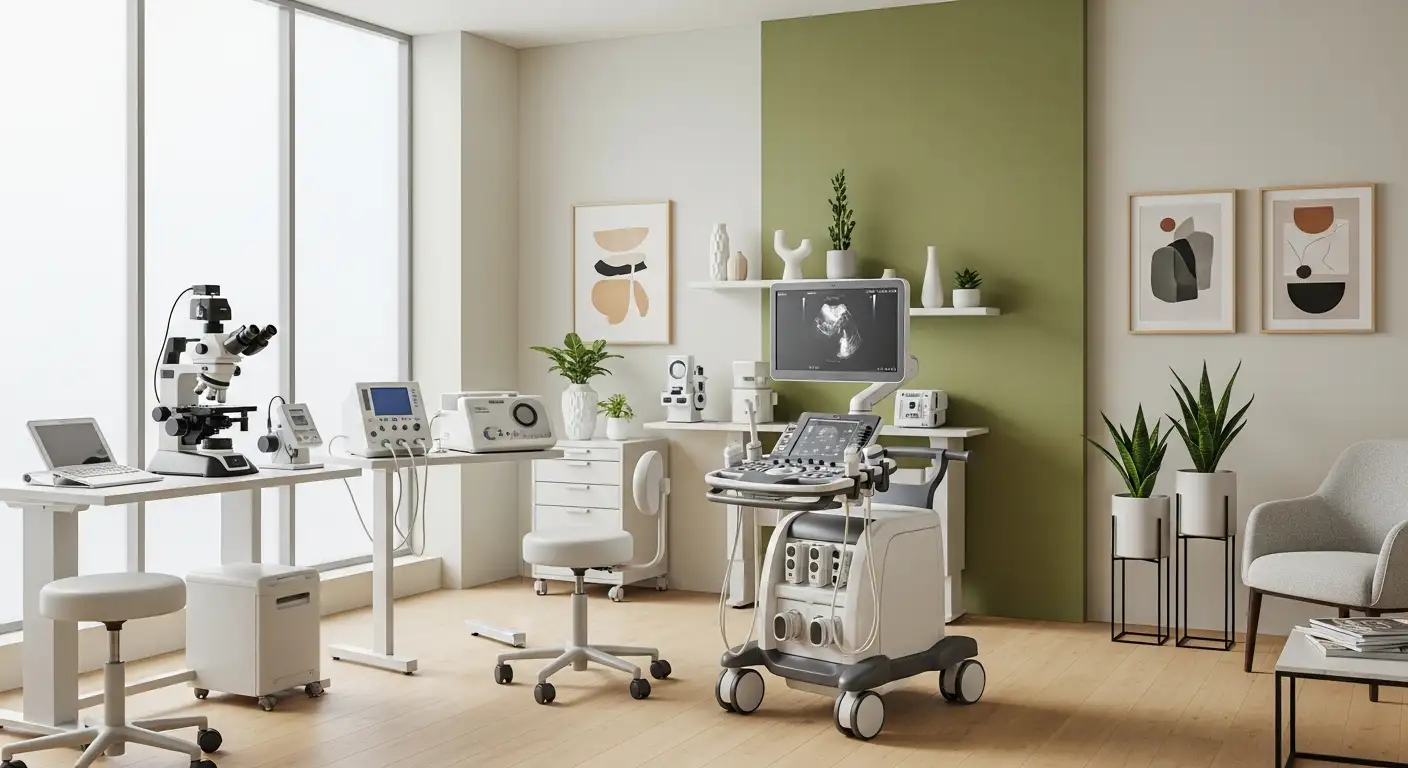Introduction to Luteinizing Hormone and Its Significance in Fertility
Luteinizing hormone (LH), a key glycoprotein hormone produced by the anterior pituitary gland, plays a central role in regulating reproductive processes for both women and men. Understanding LH’s functions, its fluctuations during reproductive stages, and its clinical implications can vastly improve fertility treatments and reproductive health management. This article explores LH’s critical actions, diagnostic value, and therapeutic applications in fertility care.
Biological Role of Luteinizing Hormone in Male and Female Reproduction
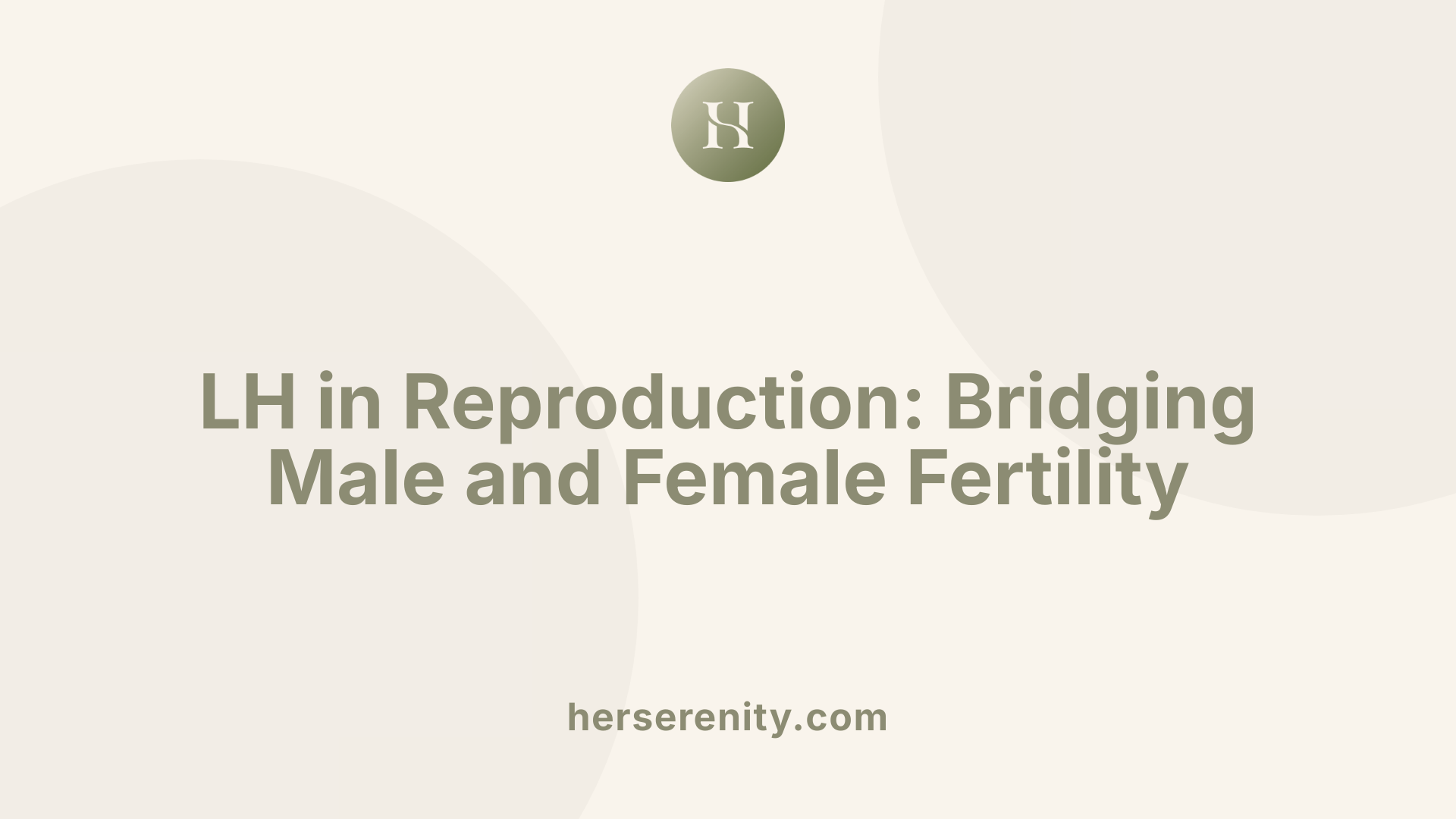
LH Production and Regulation
Luteinizing hormone (LH) is a glycoprotein hormone produced by gonadotroph cells in the anterior pituitary gland. Its secretion is tightly controlled by gonadotropin-releasing hormone (GnRH) from the hypothalamus. Feedback from sex steroids like estrogen and testosterone modulates LH release, maintaining hormonal balance. LH levels vary throughout life stages—from fetal development, through puberty, into adulthood—and fluctuate during the menstrual cycle in women.
LH Functions in Women
In females, LH is essential for regulating reproductive processes. It stimulates ovarian follicles to produce androgens, which convert into estrogens, promoting follicular growth and oocyte maturation. Mid-cycle, a sharp LH surge triggers ovulation, releasing the mature egg. After ovulation, LH supports the corpus luteum to produce progesterone, which prepares the uterine lining for implantation and maintains early pregnancy. LH also influences endometrial differentiation, playing a role in fertility.
LH Functions in Men
LH targets the Leydig cells in the testes, stimulating them to produce testosterone. Testosterone is vital for sperm production (spermatogenesis), development of male secondary sexual characteristics, and overall male reproductive health. Although high systemic testosterone is traditionally considered necessary, recent studies suggest that adequate intratesticular testosterone, supported by LH, is sufficient to maintain spermatogenesis even if circulating levels are low.
LH’s Role in Sexual Development and Fertility
LH levels rise during puberty to regulate sexual maturation in both sexes. In women, LH controls the menstrual cycle phases and ovulation, directly affecting fertility and reproductive timing. In men, LH supports the onset and maintenance of male sexual characteristics and fertility. Abnormal LH levels can indicate reproductive disorders—high LH often correlates with conditions like polycystic ovary syndrome (PCOS) or ovarian failure in women and primary hypogonadism in men, while low LH levels may reflect hypothalamic or pituitary dysfunction affecting fertility.
| Aspect | Women | Men | Regulation & Feedback |
|---|---|---|---|
| Production Site | Anterior pituitary gland | Anterior pituitary gland | Controlled by GnRH with steroid feedback |
| Primary Function | Triggers ovulation, supports progesterone production, promotes estrogen synthesis | Stimulates Leydig cells to produce testosterone | Feedback from estrogen/testosterone modulates secretion |
| Role in Development | Initiates puberty, regulates menstrual cycle | Initiates puberty, supports secondary sexual characteristics | Levels fluctuate with age and reproductive status |
| Fertility Impact | Essential for ovulation and early pregnancy maintenance | Crucial for spermatogenesis and testosterone-dependent functions | Abnormal levels indicate reproductive disorders |
The Hypothalamic-Pituitary-Gonadal Axis and LH Regulation
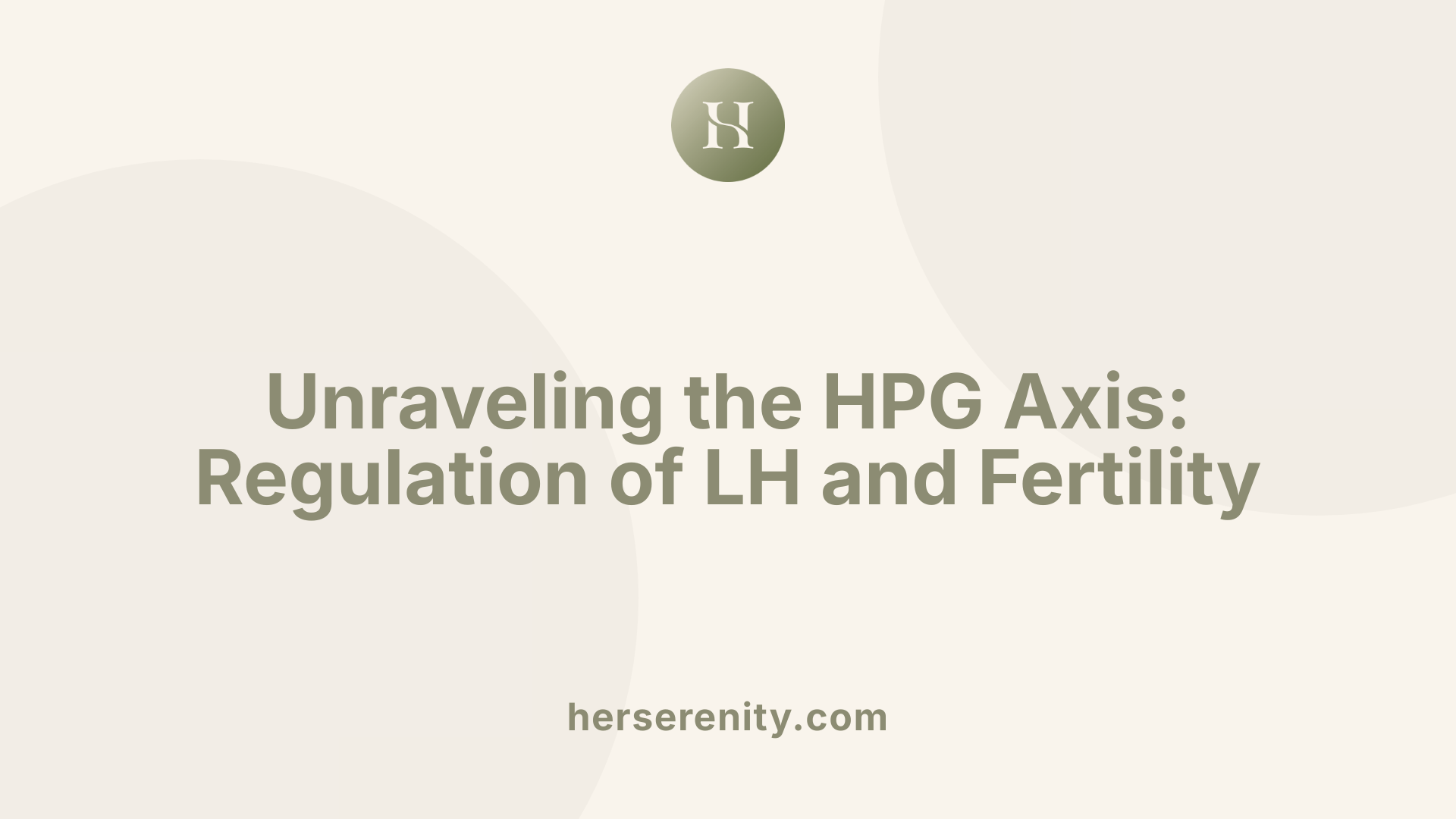
How is LH secretion regulated by GnRH?
Luteinizing hormone (LH) secretion is primarily regulated by the hypothalamus through the release of gonadotropin-releasing hormone (GnRH). GnRH stimulates the gonadotroph cells in the anterior pituitary gland to produce and secrete LH into the bloodstream. This pulsatile secretion of GnRH is essential to maintain normal LH levels and proper reproductive function in both males and females.
What feedback mechanisms affect LH levels involving estrogen and testosterone?
LH secretion is tightly controlled by feedback loops involving sex steroids. Estrogen plays a dual role: at moderate levels, it provides negative feedback to reduce LH secretion, helping to prevent premature ovulation. However, just before ovulation, high estrogen levels switch to positive feedback, causing an LH surge that triggers ovulation in females. Testosterone, primarily in males, exerts negative feedback on LH production; when testosterone levels are sufficient, they suppress further LH release to maintain hormonal balance.
How do LH levels fluctuate during developmental stages and puberty?
LH levels show dynamic changes across different life stages. During fetal development, LH concentrations vary between male and female fetuses, reflecting early sexual differentiation. After birth, LH levels rise temporarily due to the withdrawal of maternal estrogens but then fall to low levels throughout childhood. At puberty, increasing GnRH pulsatility results in a rise in LH secretion, which promotes gonadal steroidogenesis. This hormonal change underlies sexual maturation, including the development of secondary sexual characteristics and the initiation of reproductive capability.
These regulatory mechanisms ensure that LH fulfills its critical roles in reproductive health, controlling processes from follicle maturation and ovulation in women to testosterone production and spermatogenesis in men.
LH’s Critical Role in Female Fertility and Menstrual Cycle
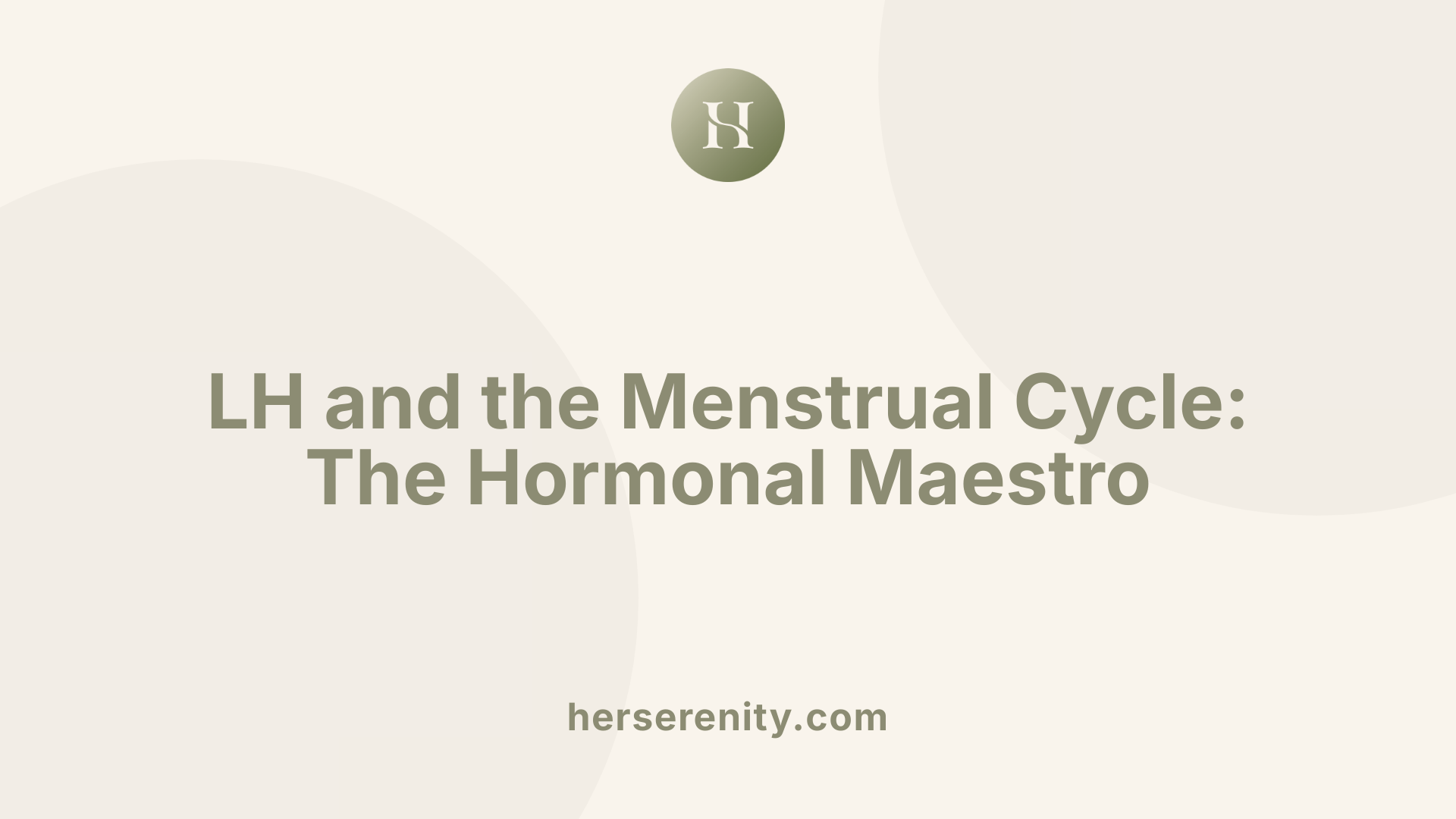
How does LH stimulate ovarian follicle development?
Luteinizing hormone (LH), secreted by the anterior pituitary gland, plays a pivotal role in ovarian follicle development. It acts on the theca cells surrounding the ovarian follicles to stimulate the production of androgens, which are precursors to estrogen. This androgen substrate is essential for granulosa cells to synthesize estrogen, thereby supporting continued follicular growth and maturation.
What is the significance of the LH surge in triggering ovulation?
Around mid-cycle, a pronounced surge in LH levels occurs, which is crucial for triggering ovulation—the release of a mature egg from the dominant ovarian follicle. This LH surge induces protease activity and initiates oocyte maturation, leading to follicular rupture and egg release, marking the fertile window in the menstrual cycle.
How does LH support progesterone production by the corpus luteum and early pregnancy?
Following ovulation, LH stimulates the transformation of the ruptured follicle into the corpus luteum, which produces progesterone. This hormone is vital for preparing and maintaining the uterine lining, making it receptive for embryo implantation and supporting early pregnancy if fertilization occurs.
What role does LH have in estrogen synthesis and folliculogenesis?
LH-driven androgen production enables granulosa cells to convert androgens into estrogen, mainly estradiol. Estrogen promotes further follicular growth, oocyte maturation, and endometrial thickening. This hormonal interplay ensures the regular progression of folliculogenesis and consolidates reproductive cyclicity.
Overall, LH functions as a central regulator within the menstrual cycle, orchestrating follicular development, ovulation, and hormonal changes essential for fertility.
LH Functions in Male Fertility and Testosterone Production

How Does LH Stimulate Leydig Cells for Testosterone Production?
Luteinizing Hormone (LH), produced by the anterior pituitary gland, plays a pivotal role in male reproductive function. In males, LH specifically targets Leydig cells in the testes. Binding to G-protein-coupled receptors on these cells, LH activates intracellular signaling pathways involving adenylyl cyclase and cyclic AMP. This action stimulates Leydig cells to synthesize and secrete testosterone, the key androgen responsible for male sexual development.
What Role Does Testosterone Play in Spermatogenesis and Secondary Sexual Characteristics?
Testosterone produced under LH stimulation is crucial for spermatogenesis—the process of sperm cell development—by promoting the appropriate environment within the testes. It supports the maturation of germ cells and influences Sertoli cells to facilitate sperm production. Additionally, testosterone governs the development of secondary sexual characteristics such as increased muscle mass, deepening of the voice, and facial hair growth. These effects underscore the importance of LH-driven testosterone synthesis for both fertility and male phenotype.
What Insights Do Genetic Mutation Studies Provide About LH and Spermatogenesis?
Notably, genetic studies have reshaped our understanding of LH's role. Men with mutations in the LH beta subunit show very low circulating testosterone levels (only 1–2% of normal) yet maintain complete spermatogenesis, suggesting that high systemic testosterone is not absolutely required. Instead, sufficient local intratesticular testosterone ensures sperm production. Similarly, LH receptor knockout models demonstrate that low-dose testosterone supplementation can sustain spermatogenesis, indicating that minimal LH activity supports fertility in specific contexts.
These findings reveal the nuanced regulation of male fertility by LH and testosterone, emphasizing the importance of intra-testicular androgen levels over systemic concentrations.
Clinical Significance of LH Level Testing in Fertility Assessment

How is LH tested?
Luteinizing hormone (LH) levels are determined through a simple blood draw. The blood sample is analyzed to measure LH concentration, which helps evaluate reproductive function. Testing is often paired with follicle-stimulating hormone (FSH) assays for a more comprehensive insight into gonadal function and hormonal balance.
What are normal LH levels?
Normal LH values differ by sex and reproductive status:
| Group | Normal LH Range (mIU/ml) | Description |
|---|---|---|
| Women (Day 3) | 2 to 10 | Early follicular phase of menstrual cycle |
| Women (Ovulatory Surge) | Significant surge over baseline | Indicates imminent ovulation |
| Men | 1 to 9 | Baseline values for adult males |
| Children & Teens | Variable, low before puberty | Increase at puberty marking sexual maturation |
These ranges provide vital context for interpreting test results.
Why combine LH testing with FSH?
LH and FSH work synergistically in regulating reproductive processes. Paired measurement allows clinicians to differentiate between disorders affecting the hypothalamic-pituitary-gonadal axis. For example, a high LH to FSH ratio might suggest conditions such as polycystic ovary syndrome (PCOS), whereas low LH and FSH levels could indicate hypothalamic or pituitary dysfunction.
How is LH testing used diagnostically?
LH level testing is fundamental in diagnosing various reproductive conditions:
- Infertility: Abnormal LH levels can contribute to ovulatory dysfunction in women and testicular failure in men.
- Menopause and Perimenopause: Elevated LH signals ovarian aging and transition to menopause.
- Puberty Disorders: In children and adolescents, LH tests help identify causes of early (precocious) or delayed puberty by understanding hormonal maturity.
By interpreting LH values in context with clinical symptoms and other hormone tests, healthcare providers can deliver targeted treatment plans to improve fertility outcomes and manage reproductive health effectively.
Interpreting Abnormal LH Levels and Associated Conditions
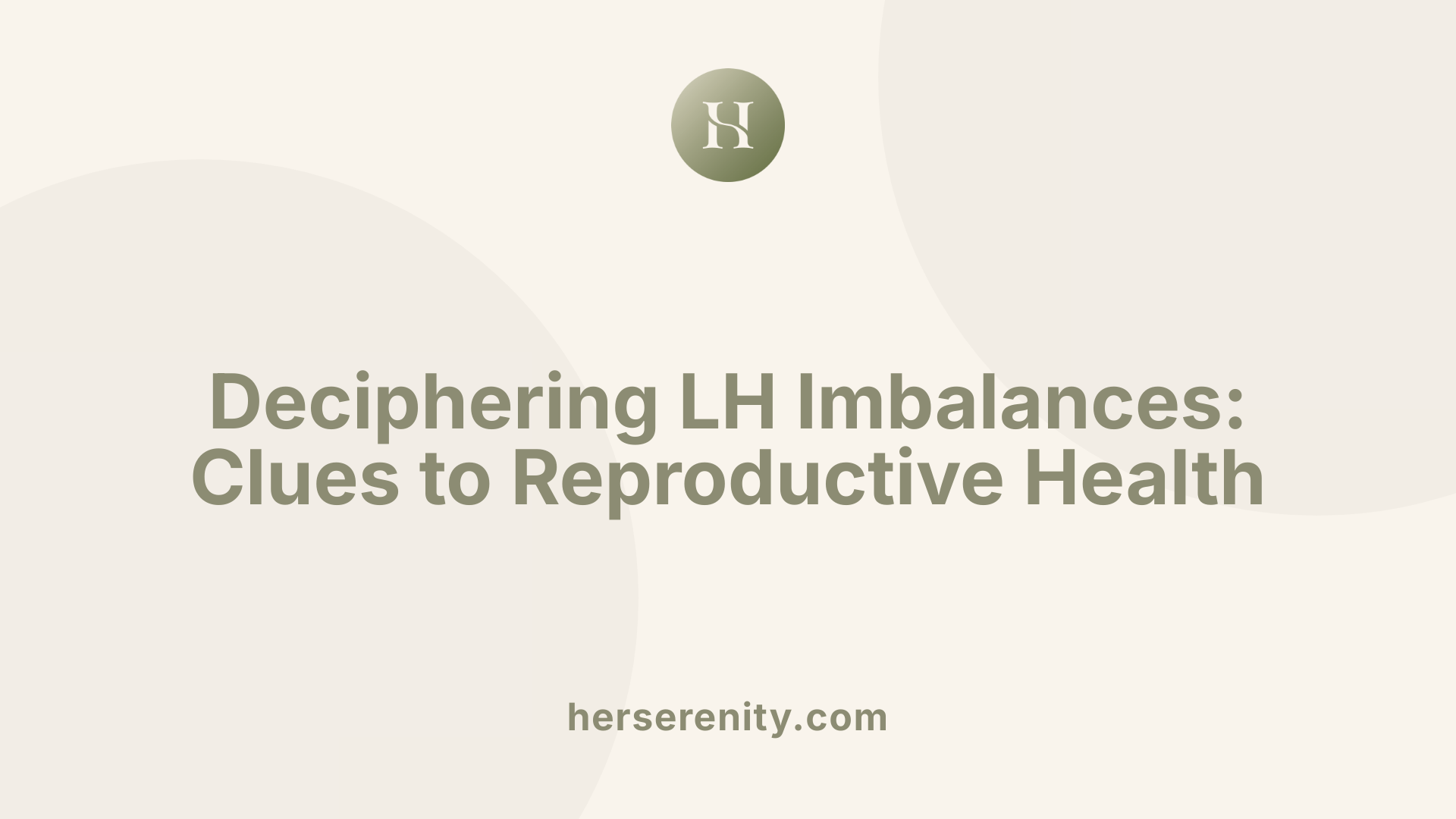
What do high LH levels indicate in women?
High luteinizing hormone (LH) levels in women can signal several reproductive health issues. Elevated LH is commonly linked to polycystic ovary syndrome (PCOS), a condition characterized by irregular menstrual cycles and infertility. Additionally, high LH levels may reflect ovarian aging or the onset of menopause, where ovarian function declines naturally. These elevations disrupt the balance of reproductive hormones and often affect ovulation and fertility.
What conditions are associated with low LH levels?
Low LH levels often suggest dysfunction in the hypothalamus or pituitary gland, the key regulators of LH secretion. For example, hypothalamic amenorrhea—where the hypothalamus suppresses reproductive hormone production—can cause reduced LH release. Genetic conditions such as Kallmann syndrome, impacting sexual development by impairing hormone signaling, also present with low LH. These deficiencies can lead to issues with sexual maturation and fertility challenges.
How do LH abnormalities impact infertility and sexual development?
Both high and low LH levels adversely affect reproductive health. High LH in women may lead to anovulation, impairing the chance of pregnancy, while low LH compromises the hormonal signals necessary for ovulation and sexual maturation. In children and teens, abnormal LH levels are diagnostic in cases of delayed or precocious puberty, guiding clinical intervention.
What does abnormal LH mean in men?
In men, elevated LH levels may indicate primary hypogonadism, where the testes are unresponsive, leading to low testosterone despite high stimulation signals. Conversely, low LH levels suggest hypothalamic or pituitary dysfunction, resulting in inadequate testosterone production, negatively affecting sperm formation, sexual characteristics, and fertility potential.
LH testing through blood samples helps physicians diagnose these conditions effectively by assessing the balance of reproductive hormones. Understanding abnormal LH levels provides crucial insights into fertility status and guides appropriate treatment approaches to address hormonal imbalances in both sexes.
Therapeutic Role of LH in Assisted Reproductive Technologies (ART)

LH Supplementation Benefits in Ovarian Stimulation
Luteinizing hormone (LH) supplementation plays a vital role in enhancing ovarian stimulation, especially in specific subgroups of women undergoing assisted reproductive technologies (ART). Women classified as hypo-responders or those experiencing reduced sensitivity to gonadotropins often benefit from LH addition to follicle-stimulating hormone (FSH) therapy, leading to improved ovarian response and greater numbers of retrieved oocytes. Additionally, women of advanced reproductive age, particularly between 35 and 40 years, experience enhanced fertilization rates and embryo quality with LH supplementation.
Effects of Recombinant LH (r-hLH) and Human Menopausal Gonadotropin (hMG)
r-hLH provides pure LH activity with potent anti-apoptotic and proliferative effects, which are crucial in follicular development and oocyte maturation. It is the main inducer of luteinization, necessary for progesterone production supportive of implantation. Human menopausal gonadotropin (hMG), containing both FSH and LH activity, has demonstrated efficacy in infertility treatment without causing excessive LH secretion, even in cases with pre-existing high LH levels such as PCOS. Clinical studies show that ovulation induction with hMG or FSH-only regimens leads to similar outcomes in many women; however, hMG is superior in treating hypogonadotropic hypogonadism.
Applications for Hypo-Responders, Advanced Reproductive Age Women, and Hypogonadotropic Hypogonadism
Specific infertile groups benefit notably from LH supplementation:
- Hypo-responders: LH addition increases oocyte retrieval, implantation, and pregnancy rates.
- Advanced reproductive age women: Improved outcomes are observed in embryo quality and fertilization.
- Hypogonadotropic hypogonadal women: Supplemental LH is essential as FSH alone cannot support follicle growth adequately, with data showing higher pregnancy rates when LH is combined.
Balancing LH Levels to Optimize Follicular Development and Pregnancy Rates
Maintaining adequate but not excessive LH levels is crucial in ART. While LH supports androgen synthesis for estrogen production and oocyte maturation, too much LH can inhibit granulosa cell proliferation and negatively affect follicular growth and embryo implantation. Controlled LH supplementation helps sustain follicular development, supports luteinization, and enhances endometrial receptivity, thereby improving pregnancy outcomes in ART procedures.
Molecular Mechanisms of LH Action in Target Cells

How does LH bind to its receptors on target cells?
LH (luteinizing hormone) binds specifically to G-protein-coupled receptors (LHR) located on the surface of its target cells, such as ovarian theca and granulosa cells in women and Leydig cells in men. This binding triggers a conformational change in the receptor, initiating intracellular signaling cascades.
What signaling pathways does LH activate?
Once LH binds to its receptor, it activates the enzyme adenylyl cyclase, which increases the intracellular levels of cyclic AMP (cAMP). The rise in cAMP acts as a second messenger, activating protein kinase A (PKA) and other downstream effectors. These signaling pathways are critical for regulating cell functions related to reproduction.
How does LH induce steroidogenesis?
The activation of the cAMP pathway by LH stimulates the production of steroidogenic enzymes, leading to increased synthesis of androgens such as androstenedione in ovarian theca cells. In females, these androgens are subsequently converted into estrogens by granulosa cells. In males, LH stimulation of Leydig cells promotes testosterone production. This steroidogenesis is essential for sexual development, follicular maturation, and maintenance of reproductive functions.
What role does LH play in follicular growth and ovulation induction?
LH plays a crucial role in folliculogenesis by supporting steroid hormone production necessary for follicular growth. The LH surge mid-cycle triggers ovulation by inducing protease activity, which facilitates the release of the mature oocyte. Moreover, LH is the primary inducer of luteinization post-ovulation, stimulating the corpus luteum to produce progesterone which prepares the uterine lining for implantation.
Together, these molecular actions of LH coordinate critical reproductive processes including androgen and estrogen synthesis, follicular development, ovulation, and preparation for early pregnancy, underscoring its vital role in human fertility.
Emerging Insights from Genetic and Experimental Models on LH and FSH

What Roles Do LH and FSH Play in Spermatogenesis and Folliculogenesis?
Luteinizing hormone (LH) primarily stimulates Leydig cells in the testes to produce testosterone, which supports spermatogenesis and the development of male secondary sexual characteristics. Follicle-stimulating hormone (FSH), on the other hand, acts on Sertoli cells facilitating germ cell maturation. In females, LH supports theca cells to synthesize androgens and stimulates granulosa cells during follicular growth and ovulation, while FSH is pivotal for early follicular development and granulosa cell proliferation.
What Have Receptor Mutation and Knockout Models Revealed?
Studies of humans and genetically modified mice with inactivated LH or FSH receptors provide important insights:
- LH receptor knockout (LuRKO) mice maintained spermatogenesis with low-dose testosterone supplementation, showing that extremely high intratesticular testosterone (ITT) levels are not absolutely required.
- Men with mutations in the LH beta subunit demonstrated normal spermatogenesis despite very low circulating testosterone, highlighting the sufficiency of local ITT.
- Complete loss of FSH receptor function leads to primary follicular arrest in humans, underscoring FSH's essential role in early follicular growth.
- Partial FSH receptor activity allows follicles to advance to early antral stages, reflecting residual functional capacity.
How Do These Findings Impact Our Understanding of Hormonal Requirements for Fertility?
The traditional view that high systemic testosterone and gonadotropin levels are necessary for spermatogenesis is challenged. Instead, sufficient intra-testicular testosterone at low systemic levels may maintain spermatogenesis. Moreover, FSH's critical role in folliculogenesis indicates that without it, early follicle development halts, while LH alone cannot substitute.
How Does FSH’s Role Compare With LH’s?
FSH is essential for initiating and sustaining early follicle growth and Sertoli cell function. Conversely, LH is crucial for Leydig cell maturation and steroidogenesis but can be partially compensated for in spermatogenesis by adequate intratesticular testosterone. Excess FSH does not impair testicular function and may support spermatogenesis independently of testosterone, revealing distinct but complementary gonadotropin functions.
These genetic and experimental insights are reshaping fertility treatment approaches by recognizing nuanced hormone interactions, potentially improving therapies for hypogonadism and infertility.
Impacts of LH on the Endometrium and Implantation Success
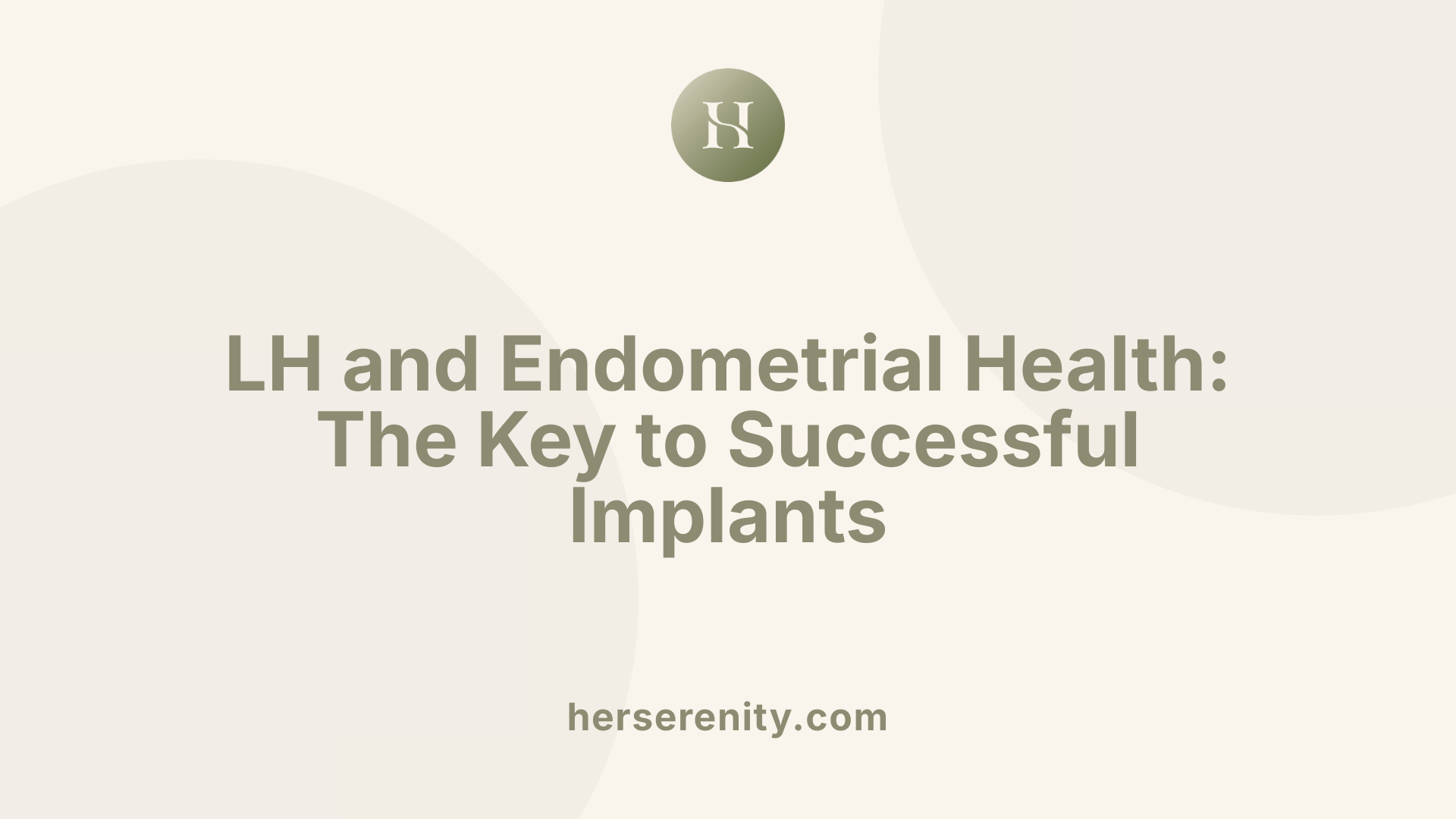
Expression of LH Receptors in Endometrial Tissue
Luteinizing hormone receptors (LHR) are abundantly expressed in human endometrial tissue throughout the menstrual cycle. This widespread expression suggests that LH directly influences endometrial function, playing roles beyond follicular development and ovulation.
LH’s Influence on Fibroblast Differentiation and Tissue Regeneration
LH promotes the differentiation of endometrial fibroblasts into decidual cells, a critical process preparing the uterine lining for implantation. This differentiation supports the structural and functional readiness of the endometrium to receive and nourish an embryo.
Negative Effects of Consecutive LH on Endometrial Stem Cells and Tissue Thickness
However, consecutive administration of exogenous LH can inhibit important stem cell functions within the endometrium. It suppresses activities such as self-renewal, migration, multilineage differentiation, and maintenance of stemness. Mechanistically, LH hinders pro-survival signaling pathways including Akt and ERK1/2, leading to reduced tissue regeneration capacity and thinner endometrial lining.
Potential Implications for Pregnancy Success in Fertility Treatments
These inhibitory effects of chronic LH exposure may contribute to lower pregnancy success rates observed in fertility protocols that involve LH supplementation. The diminished regenerative ability of endometrial stem cells and reduced uterine thickness can impair implantation potential and overall reproductive outcomes.
Understanding the dualistic role of LH in the endometrium underscores the need for optimized LH dosing strategies during assisted reproductive technologies to balance follicular benefits with endometrial health.
Diagnostic and Therapeutic Applications of LH Testing Across Lifespan
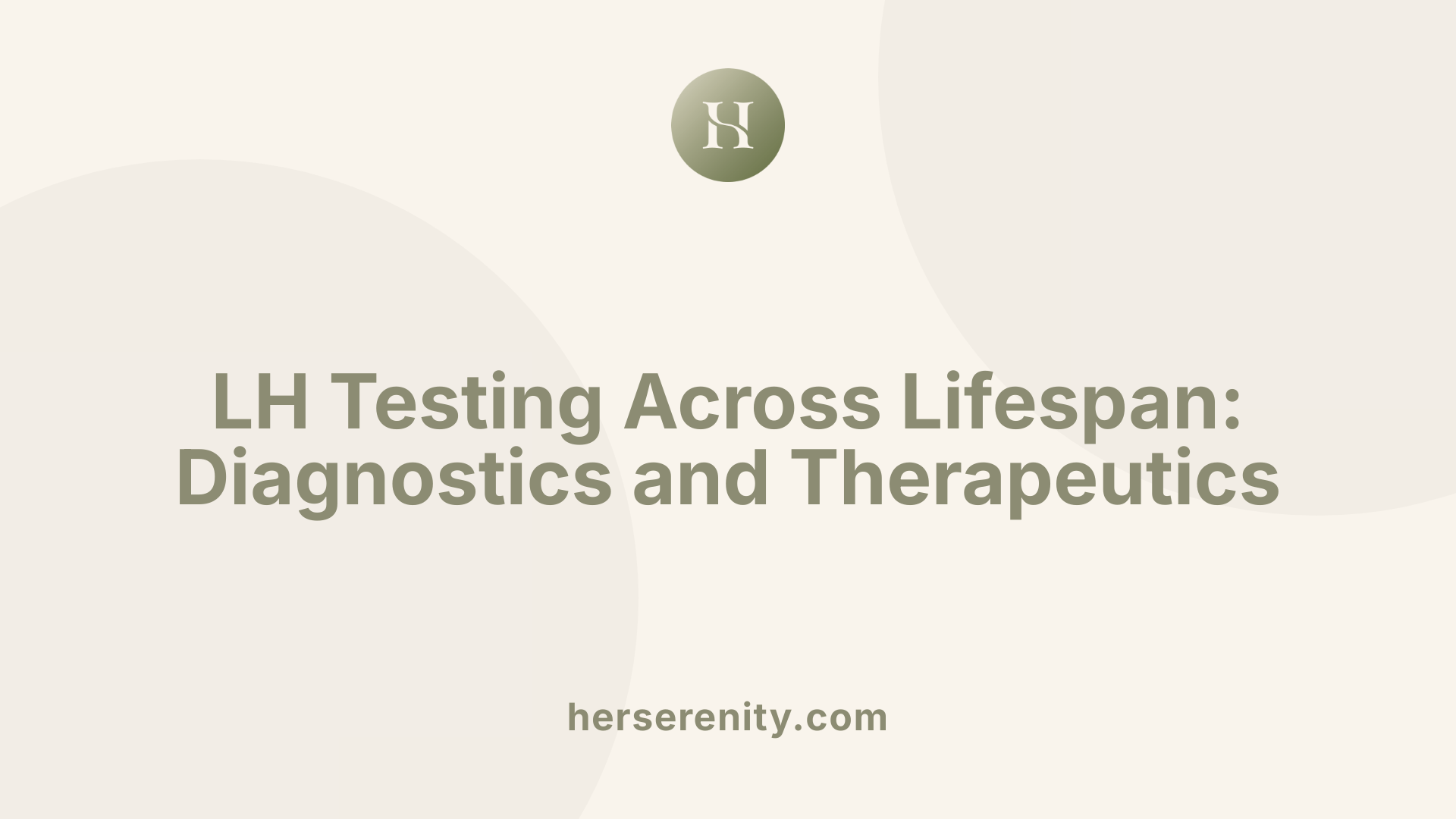
How is LH testing used in pediatric and adolescent puberty assessment?
LH testing plays a critical role in evaluating children and teens who experience early or delayed puberty. Measuring LH levels helps distinguish between central (gonadotropin-dependent) and peripheral (gonadotropin-independent) precocious puberty. Elevated LH and FSH levels typically indicate central precocious puberty caused by premature activation of the hypothalamic-pituitary-gonadal axis, while normal levels suggest peripheral causes. For delayed puberty, LH levels can be low, normal, or high, depending on the underlying cause such as hypothalamic or pituitary dysfunction or genetic disorders.
What role does LH testing play in diagnosing precocious and delayed puberty?
LH measurement provides essential information for diagnosis. In precocious puberty, a high LH response to gonadotropin-releasing hormone (GnRH) stimulation confirms central activation, guiding appropriate intervention. Conversely, low LH may suggest disorders like hypogonadotropic hypogonadism. In delayed puberty, absent or low LH implies inadequate pituitary or hypothalamic signaling, whereas elevated LH indicates primary gonadal failure. This helps clinicians determine treatment strategies tailored to the cause.
How is LH testing applied in evaluating hormonal function in adult infertility and menopause?
In adults, LH testing is vital for assessing reproductive health. In women, variations in LH levels throughout the menstrual cycle correlate with ovulation timing; a surge indicates ovulation. High LH levels may signify polycystic ovary syndrome (PCOS), ovarian aging, or menopause status, while low levels can reveal hypothalamic or pituitary dysfunction. In men, LH measurements aid in diagnosing causes of infertility, low testosterone levels, and related symptoms such as diminished sex drive. Additionally, LH level assessment is part of fertility evaluations and guides management of reproductive disorders.
What hormone therapy options address LH imbalances?
Therapeutic interventions depend on underlying LH imbalances. LH supplementation is used in assisted reproductive technologies (ART) to stimulate follicle development and improve pregnancy outcomes, especially in women with hypogonadotropic hypogonadism or poor ovarian response. In men with low LH and testosterone, treatments include pulsatile GnRH, LH, or human chorionic gonadotropin (hCG) therapy to restore testosterone production and spermatogenesis. Hormone replacement therapy or gonadotropin administration may also be part of managing menopause-related symptoms or hypogonadism.
These diagnostic and therapeutic uses of LH testing highlight its importance from childhood through adulthood in managing reproductive health and fertility challenges.
Lifestyle Considerations and Future Directions in LH-Related Fertility Treatments
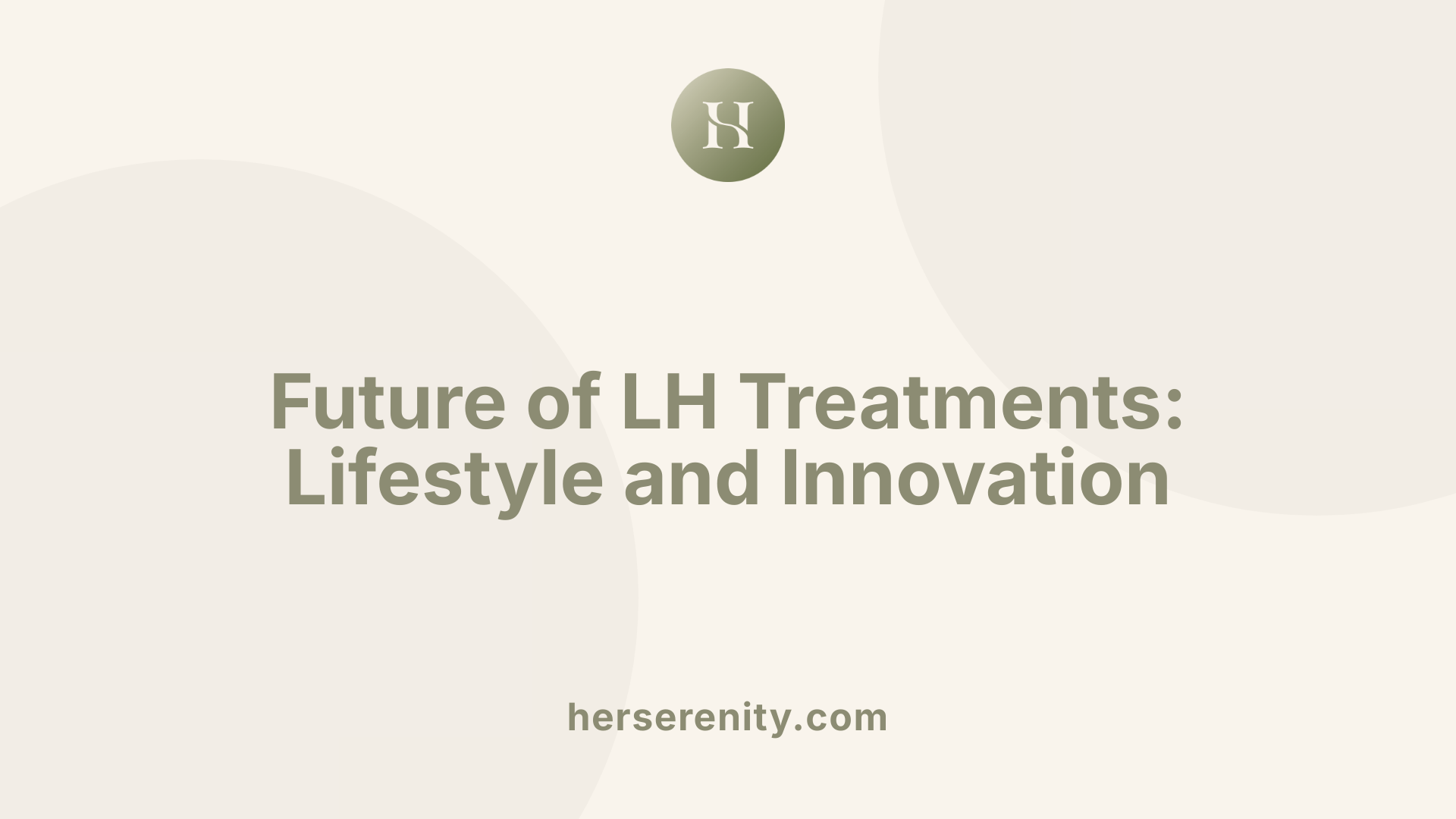
Which lifestyle factors support balanced LH production?
Maintaining balanced luteinizing hormone (LH) levels is essential for reproductive health. Lifestyle factors that support healthy LH production include adequate nutrition, moderate regular exercise, and stress management. Avoiding excessive alcohol consumption and smoking also plays a critical role. These behaviors help maintain the hormonal balance regulated by the hypothalamic-pituitary-gonadal axis, thereby promoting fertility and general reproductive system function.
What are the latest advances in LH-related therapeutic protocols?
Recent progress in LH-related therapies has focused on optimizing fertility treatments, especially assisted reproductive technologies (ART). For example, recombinant LH supplementation is used for women with poor ovarian response, hypogonadotropic hypogonadism, or reduced basal gonadotropin levels. Such protocols have shown improvements in oocyte number, implantation rates, and pregnancy outcomes. Additionally, LH is employed in conjunction with follicle-stimulating hormone (FSH) to better mimic natural hormonal cycles and improve endometrial receptivity.
What future research directions are there in LH supplementation and fertility preservation?
Future studies aim to clarify the benefits of LH supplementation in subgroups like women with repeated implantation failure and those undergoing fertility preservation. Research priorities include determining optimal dosing strategies, timing, and patient selection to maximize treatment efficacy. Investigations into LH's influence on endometrial factors and its interactions with other hormonal pathways will deepen understanding. Such insights could refine therapeutic approaches and enhance pregnancy success rates in ART.
How might LH research impact contraceptive development?
Emerging research on LH’s role in folliculogenesis and steroidogenesis could inform novel contraceptive strategies targeting LH pathways. Manipulating LH activity might offer reversible and controlled suppression of ovulation or sperm production, providing alternatives to existing contraceptives. As knowledge about LH receptor signaling and effects on reproductive tissues expands, it may facilitate development of targeted hormonal modulators with fewer side effects.
Overall, integrating lifestyle management with evolving LH-based therapies represents a promising horizon in reproductive medicine, enhancing fertility treatment outcomes and broadening reproductive health options.
Summary and Future Perspectives on LH in Fertility
Luteinizing hormone is a cornerstone of reproductive health, essential to the processes of ovulation, sperm production, and sexual maturation. Advances in understanding its molecular actions, hormonal interplay, and clinical implications have enabled the development of targeted fertility treatments that improve outcomes for many patients. While LH testing and supplementation are invaluable tools in treating infertility and reproductive disorders, ongoing research continues to optimize these approaches and clarify LH’s roles in diverse physiological and pathological contexts. With lifestyle modulation and evolving medical therapies, the future holds promising avenues for enhancing fertility care centered around luteinizing hormone.
References
- Luteinizing Hormone: Levels, Function & Testing
- Physiology, Luteinizing Hormone - StatPearls
- The role of luteinizing hormone in folliculogenesis and ...
- The Roles of Luteinizing Hormone, Follicle-Stimulating ...
- Luteinizing Hormone (LH) Levels Test
- Luteinizing Hormone Function: Key Player in Reproductive ...
- Novel roles of luteinizing hormone (LH) in tissue ...
- The role of recombinant LH in ovarian stimulation: what's new?
- LH: the luteinising hormone in charge of the reproductive ...
